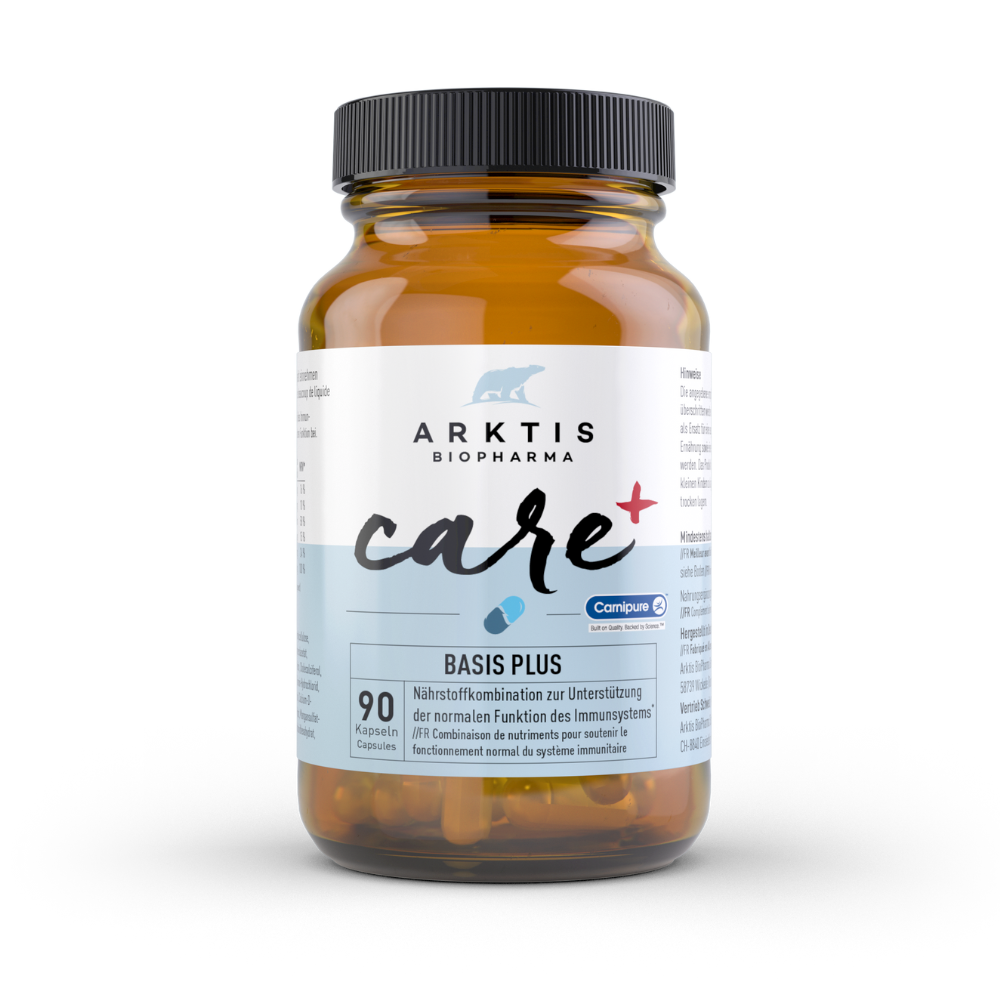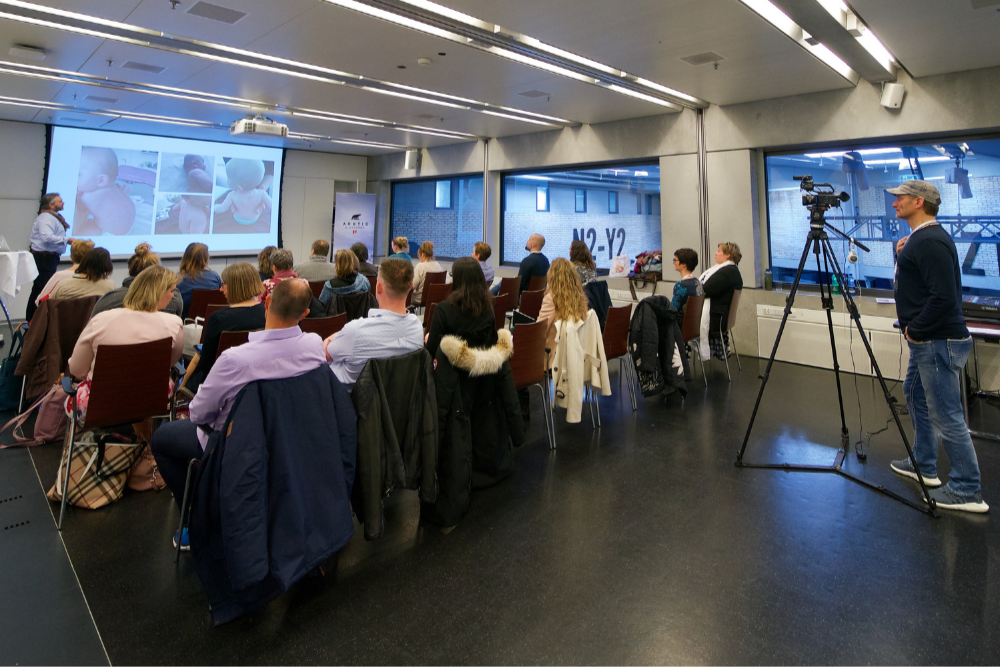Why intestinal flora is so important
The importance of our intestinal flora for human health is undisputed. Microbes in our gut ferment fiber from our food that our own organism cannot break down and extract additional vitamins and short-chain fatty acids for us. These fatty acids are essential for the integrity and health of the intestinal mucosa.
In addition, the intestinal flora plays an important role in the immune system and protects us from infections and even chronic diseases, including autoimmune diseases and cancer. [ 1]The digestive tract contains at least 10 trillion microorganisms - bacteria, fungi, archaea, protozoa and viruses - which are classified into 12 different phyla (strains). [ 2] How many different types of microbes there are has not yet been conclusively determined. Estimates range from at least 500 [3] to over 2,000 [4]. Until a few years ago, it was hardly possible to study anaerobic microbes as they could not be cultivated in a Petri dish. Today, it is possible to study microbial genetic material, which has significantly advanced microbiology.
We now know much more, but by no means everything, about our flora. more
[caption id="attachment_13039" align="aligncenter" width="1024"] Source: Pexels[/caption]
Source: Pexels[/caption]
Intestinal flora in newborns
Microbial colonization can be detected in infants immediately after birth. Questions that still occupy scientists in this context are:
- Where do early childhood microbes come from?
- When does colonization begin?
- Do children born naturally have a different microbiome (the totality of microbial genes) than children born by caesarean section?
- If so, is this difference relevant for the future health of the child?
Microbes in infants
Before birth
There is no longer any doubt that microbes are transferred from mother to child during natural birth and that this transfer is important for the child's health.
However, exactly how this transfer takes place has not yet been conclusively clarified. Some researchers are of the opinion that the colonization of the child's intestines already begins in the womb. Studies of the placenta's microbiome have identified microbes that are otherwise mainly found in the mouth. According to several studies, the amniotic fluid is not sterile either[5],[6],[7]
. However, later studies were unable to confirm this, but came to the conclusion that microbes detected in the placenta were in fact colonized by contamination after birth. [ 8],[9]
The fact that far fewer maternal microbes are detected in children born by caesarean section also speaks against prenatal colonization. A further counter-argument is that it is possible to rear sterile animals in the laboratory, provided that born by caesarean section.
At birth
It appears that the child is only exposed to microbes at birth. Access occurs with the rupture of the amniotic sac. After delivery, the establishment, development, maturation and stabilization of the intestinal flora is triggered and shaped by the interaction between microorganisms and host as well as by numerous external and internal factors. For example, genetic factors, the diet of mother and child, the environment, the social environment, diseases, medication and the type of birth all play a role.
An Italian study found that on the day of (natural) birth, 50.7% of the microbial species in the gut of newborns came from the mother's intestine, vagina, mouth or skin. The majority came from the mother's gut (22.1 %), followed by the vagina (16.3 %), mouth (7.2 %) and skin (5 %). [ 10]
A Swedish study found that two to five days after birth, mother and child have 72% of their intestinal bacteria in common. [ 11] The route by which the mother's intestinal bacteria enter the child's intestine is still unclear. What is certain is that intestinal bacteria are transferred, that this transfer continues after birth, that microbes transferred from the mother settle and persist better in the child's intestine than microbes from other sources, and that they play an important role in the development of the child's intestinal flora. [12]
In the case of births by caesarean section, the proportion of maternal microbes two to five days after birth is only 42%. [ 13] The first contact of a caesarean section infant with microbes is usually via the mother's skin and the environment. The composition of the flora is correspondingly different. It contains more species that are typically native to the skin than intestinal species. Bacteroides and Bifidobacteria are only detected after vaginal delivery.
[caption id="attachment_12959" align="aligncenter" width="900"] Source: Unsplash[/caption]
Source: Unsplash[/caption]
In the years after birth
As the child grows older, the intestinal flora becomes more and more similar to that of a naturally born child, but this can take more than four years. These long-lasting and large-scale variations in gut flora in early life may contribute to the health risks associated with caesarean sections. [ 14] For example, infants delivered by caesarean section are 33% more likely to become overweight and obese compared to those delivered vaginally [15]. C-section babies born to overweight mothers even have up to a fivefold risk of also becoming overweight and obese. [ 16] Sevelsted at al found that children born by caesarean section have an increased risk of immune disorders. [17]
In contrast, a recent study by Chu et al [18] identified no significant differences in the gut flora of infants at the time of birth, regardless of whether they were born vaginally or by caesarean section. However, they did find significant changes due to the mode of delivery in other body sites such as the oral cavity, nose and skin at birth, six weeks disappeared after the birth. The lack of contact with maternal microbes is seen as one reason for the apparently reduced and altered colonization of the early childhood intestine in caesarean sections. Another is the routine and necessary use of drugs during caesarean section births - especially painkillers and antibiotics - which further disrupt the intestinal flora of mother and child.
Most experts have no doubt that a caesarean section birth has a negative impact on the intestinal flora of the child and thus on its future health. For this reason, some researchers advocate the "bacterial bath" immediately after caesarean delivery. This involves taking a swab from the mother's vagina and applying it to the baby's skin. Research is currently being carried out into whether the intestinal flora of caesarean babies can be positively influenced in this way. However, many microbiologists are skeptical - not least because the transmission mechanism in natural birth is still unclear - and warn against this method, as infections could possibly also be transmitted in this way. [19]
[caption id="attachment_13038" align="aligncenter" width="1024"] Source: Pexels[/caption]
Source: Pexels[/caption]
The composition of the microbial flora is determined by many factors. In addition to those already mentioned, the health and weight of the mother during pregnancy also play a role.
Furthermore, the composition of the maternal intestinal flora changes over the various stages of pregnancy. After delivery, breastfeeding continues to contribute to the development of early childhood intestinal flora. One reason is the direct transfer of bacteria via the skin and breast milk. Breast milk contains more than 700 species of bacteria that promote nutrient metabolism and absorption, support the development of the immune system, strengthen the intestinal mucosa and the child's gut-brain axis. [ 20] It also contains prebiotics that nourish the intestinal flora. These promote microbial activity in the baby's gut, the growth of bifidobacteria, the immune defense in the cells of the intestinal mucosa, as well as the baby's growth and even the baby's body composition.
The composition of the flora of breast milk has different phases. Colostrum - the first milk - contains different bacteria and in different proportions than later breast milk. Just like the intestinal flora, breast milk is influenced in each phase by the mother's environment, her diet, medication, etc. [21]. [ 21] If the mother is willing and able to breastfeed her child, this would be beneficial for the development of the child's intestinal flora. Apparently, breastfeeding for six months or longer strengthens the intestinal flora best, compared to infants who are breastfed for a shorter period of time. [22] However, prolonged breastfeeding, e.g. more than 30 months, can hinder the maturation of the intestinal flora in infants. [23]
Even in newborns, it is possible to promote the development of intestinal flora with the administration of Probiotics. Here too, the results are all the better if breastfeeding is at least partial. [ 24] For practical tips on how you as a mother - or you as parents - can support your body before and during pregnancy and give your newborn a good start, we recommend our blog post"Gut therapy in pregnancy and infants".
[1] Lazar V, Ditu LM, Gradisteanu G, et al (2018): Aspects of Gut Microbiota and Immune System Interactions in Infectious Diseases, Immunopathology and Cancer. Front Immune, Aug 2018 9:1830.
[2] ibid.
[3] Wang S, Ryan CA, Boyaval P, et al (2020): Maternal Vertical Transmission Affecting Early-life Microbiota Development. Trends Microbiol. 2020 Jan;28(1):28-45.
[4] Lazar et al, 2018.
[5] Ardissone AN, de la Cruz DM, Davis-Richardson AG, et al (2014): Meconium microbiome analysis identifies bacteria correlated with premature birth. PLoS One 9:3:e90784.
[6] De Martino SJ, Mahoudenau J, Brettes JP, et al (2004): Peripartum bacteremias due to Leptotrichia amnionii and Sneathia sanguienegens - Rare Causes of Fever during and after delivery. J Clin Microbiol. 42(12):5940-3
[7] Aagaard K, Ma J, Antony KM, et al (2014): The placenta harbors a unique microbiome. Sci Transl Med (2014). 6:237ra65.
[8] Lauder AP, Roche AM, Sherrill-Mix S, et al (2016): Comparison of placenta samples with contamination controls does not provide evidence for a distinct placenta microbiota. Microbiome 4.29.
[9] Leiby JS., McCormick K, Sherrill-Mix S, et al (2018): Lack of detection of a human placenta microbiome in samples from preterm and term deliveries. Microbiome 6, 196.
[10] Ferretti P, Pasolli E, Tett A, et al (2018): Mother-to-Infant Microbial Transmission from Different Body Sites Shapes the Developing Infant Gut Microbiome. Cell Host Microbe. 2018 Jul 11;24(1):133-145.e5.
[11] Bäckhed F, Roswall J, Peng Y, et al (2015): Dynamics and Stabilization of the Human Gut Microbiome during the First Year of Life. Cell Host Microbe. 2015 May 13;17(5):690-703.
[12] Ferretti et al, 2018
[13] Bäckhed et al, 2015.
[14] Bokulich NA, Chung J, Battaglia T, et al (2016): Antibiotics, birth mode, and diet shape microbiome maturation during early life. Science Translational Medicine. Jun 2016; 8:343:343ra82.
[15] Li H, Zhou Y; Liu, J (2013): The impact of cesarean section on offspring overweight and obesity: a systematic review and meta-analysis. Int J Obes 37, 893-899 (2013).
[16] Tun HM, Bridgman SL, Chari R, et al (2018): Roles of Birth Mode and Infant Gut Microbiota in Intergenerational Transmission of Overweight and Obesity From Mother to Offspring. JAMA Pediatr. 2018 Apr 1;172(4):368-377.
[17] Sevelsted A, Stokholm J, Bønnelykke K, Bisgaard H (2015): Cesarean section and chronic immune disorders. Pediatrics. 2015 Jan;135(1):e92-8.
[18] Chu D, Ma J, Prince A, et al (2017): Maturation of the infant microbiome community structure and function across multiple body sites and in relation to mode of delivery. Nat Med 23, 314-326.
[19] Reardon S (2019): Do C-section babies need mum's microbes? Trials tackle controversial idea. Swabbing infants with mothers' vaginal bacteria could affect the children's health, but critics warn of sparse data and high risk. Nature 572, Aug 2019, 423-424.
[20] Wang et al, 2020.
[21] ibid.
[22] Pärnänen K, Karkman A, Hultman J, et al (2018): Maternal gut and breast milk microbiota affect infant gut antibiotic resistome and mobile genetic elements. Nat Commun. 2018 Sep 24;9(1):3891.
[23] Stewart CJ, Ajami NJ, O'Brien JL, et al (2018): Temporal development of the gut microbiome in early childhood from the TEDDY study. Nature 562, 583-588 (2018).
[24] Korpela K, Salonen A, Vepsäläinen O, et al. (2018): Probiotic supplementation restores normal microbiota composition and function in antibiotic-treated and in caesarean-born infants. Microbiome 6, 182)
















